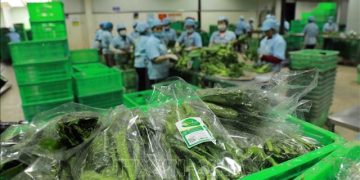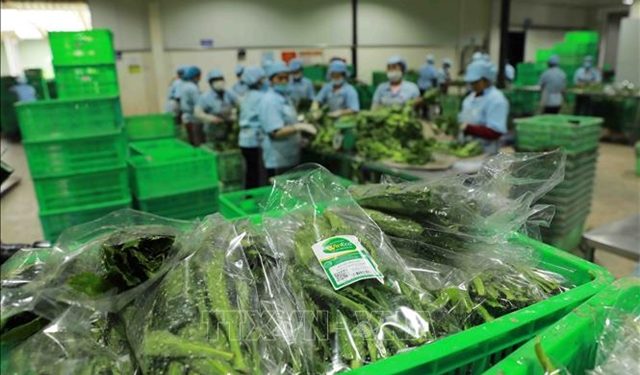#VietnameseProduce #UKVFTA #AgriculturalExports #BrandingSuccess #MarketDiversification #ProcessedFoods #SustainableAgriculture
The recent entry of Vietnamese fruits and vegetables into the UK market has showcased the country’s improving agricultural capabilities. This article examines the quality and branding considerations that have enabled Vietnam to capitalize on the opportunities presented by the UKVFTA, leading to an expansion of exports to the demanding UK market.
According to the UKVFTA, 100% tariffs on fresh and processed fruits and vegetables were lifted from January 1, 2021. Despite challenges like economic slowdown and inflationary risks affecting British consumers, Vietnam has significantly increased its fruit and vegetable exports to the UK, reaching $20.9 million in 2022—a notable 8% increase from the previous year and constituting 10% of the total export volume to Europe.
In the first half of this year alone, exports surged by 28.3% to $11.48 million. The Information Center for Vietnam’s Industry and Trade reveals that fruits and vegetables ranked 20th among export goods to the UK from January to July, comprising 0.46% of the country’s total export turnover.
Recent additions to UK supermarket shelves, including Vietnamese delicacies like DiễN pomelo, Tân LạC red pomelo, and Cao Phong oranges, highlight Vietnam’s progress in meeting the UK’s stringent hygiene and food safety standards.
Despite these successes, Vietnam maintains a modest share of the UK’s fruit and vegetable market, importing from approximately 100 countries. Nguyen, the General Secretary of the Vietnam Fruit and Vegetable Association, notes that the absence of national, corporate, and product brands has hindered Vietnam’s presence. Many products are exported under British or foreign brands, limiting Vietnam’s visibility in the market.
Creating distinct Vietnamese brands in the UK has become crucial to leveraging the opportunities presented by the UKVFTA. While businesses recognize the importance of branding for expansion in the UK, there is still much work to be done, according to Nguyen.
The UKVFTA, along with other next-generation free trade agreements, opens vast possibilities for Vietnam to establish brands and diversify fruit and vegetable markets. While Vietnam is poised to set a new record in fruit and vegetable exports this year, reaching approximately $5 billion, diversification is essential as the country still depends on the Chinese market for 65% of its exports.
To fully utilize the advantages of the UKVFTA, creating brands within a processing ecosystem, coupled with environmentally friendly production, is identified as crucial. This approach not only adds value but also overcomes barriers to market entry.
The Ministry of Agriculture and Rural Development emphasizes that over 70% of Vietnam’s exported fruits and vegetables are in fresh or minimally processed form. However, global demand for processed food is rising. Market analysis by Statista predicts that revenue in the processed and frozen fruit market will reach $64.54 billion in 2023, growing annually by 7.19% from 2023 to 2028.
Vietnam boasts around 150 fruit and vegetable processing plants using modern technologies, with an annual processing capacity of nearly 1.1 million tons—just over 10% of the total fruit and vegetable production in the country.
Nguyen Kuk Toan, Director of the Digital Transformation and Agricultural Statistics Center at the Ministry of Agriculture, underscores the need for the fruit and vegetable industry to invest in processing to increase value and diversify production. Strengthening policies that encourage value chain creation and attracting investments in deep processing and modern technologies are vital steps for meeting global consumer demand.
Vietnam’s success in the UK market underscores the importance of quality, branding, and diversification in the competitive world of fruit and vegetable exports. The UKVFTA has provided a platform for Vietnamese produce, but strategic branding and processing investments are crucial for sustained growth and market expansion.































